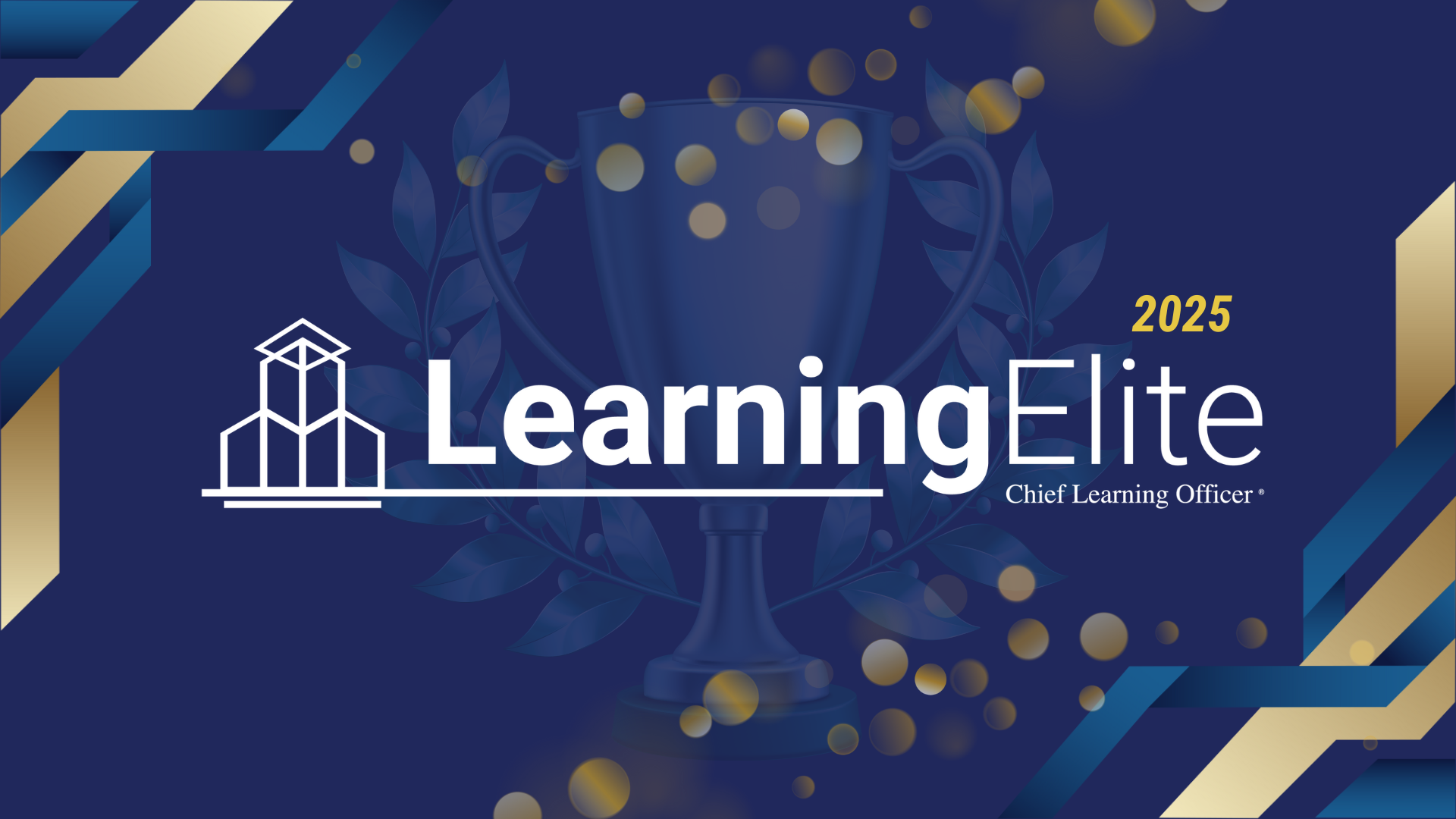To say today’s organizations have become very complex and that expectations are continually shifted would be an understatement.
According to Jay Jamrog, senior vice president, futurist and co-founder of the Institute for Corporate Productivity, in addition to managing their direct reports, front-line supervisors have to manage widely geographically dispersed talent as well. As a result, conventional leadership development is no longer adequate.
The American Management Association’s 6th annual study “Developing Global-Minded Leaders to Drive High-Performance,” done in conjunction with the Institute for Corporate Productivity and Training magazine, surveyed organizations worldwide. Participants included 1,358 development professionals from 96 countries in more than 37 industries. (Editor’s note: The author works for the American Management Association.)
As of 2015, nearly half of the organizations surveyed (48 percent) now consider developing global capabilities among their leaders a very high/high level priority (Figure 1). Emerging leaders need a higher order of leadership skills: ability to create a collaborative team, to influence many different types of talent, to think critically and to build trusting relationships.
Some 24 percent of organizations incorporate global leadership competencies in development programs and 23 percent have specific components that address global leadership development, or GLD, that are distinct from general leadership development efforts (Figure 2).
Start Early, Reach Deep, Be Hands On
Not so long ago, development around global issues was typically reserved for expatriate executives due to serve a tour overseas. The latest research indicates globalization now shapes development programs for organizations in every sector.
The 2015 survey also shows an evolution in the breadth and depth of impact for GLD programs. They reach a wider range of employees early in their careers, and prepare leaders at all levels to be nimble, to make decisions and to take appropriate actions where the action is (Figure 3). Further, the data show that when a formal GLD program begins earlier in an individuals’ career, it has a higher positive correlation with leadership effectiveness; delaying efforts until participants reach higher ranks shows a negative correlation.
Survey respondents continue to rate live and experiential learning modalities most effective for leadership development programs. But there is much more to these educational experiences than just knowledge transfer. A great deal of self-awareness and discovery take place during the face-to-face development experience, and the need to practice and master the new behaviors becomes apparent.
These experiences can bring out emotional attributes, motivation and the energy necessary to drive an individual and, by extension, others to achieve the organizational purpose in scale. Face-to-face takes more effort, but it is difficult to achieve this depth of transformation by reading a book or navigating e-learning content.
Making the Pieces Fit
There is no simple answer for how learning leaders on how to balance impact vs. scalability — particularly with a globally dispersed workforce — or what is the best modality with the highest impact, but blended approaches are becoming more common for GLD.
The 2015 survey suggests that the virtual classroom, or online instructor-led training, at 25 percent is gaining momentum, matching the self-paced e-learning modality, which has been a mature modality for more than a decade. Self-paced e-learning is effective for reinforcement or to convey basic concepts prior to the learning intervention. Yet neither method compares with face-to-face learning, which is still the preferred methodology (Figure 4).
Experience learning is also an important component in global leadership development. According to the survey, participating in cross-functional teams, organizing teamwork around a specific customer issue or project and participating in stretch assignments, rank at the top of on-the-job leadership development experiences.
What does it all mean?
Organizations are increasingly going beyond high potentials to offer GLD to a broader segment of the workforce. Senior executives are becoming more directly involved in these efforts, notably in establishing the business outcomes needed and in communicating about the program. This is a continuation of a longer-term trend. In 2011, the American Management Association surveyed 1,757 organizations worldwide and compared GLD among high- and low-performing companies. Of the high performers, 58 percent had some form of GLD program compared with 34 percent of low-performing companies.
The leading drivers for global leadership development are related to an organization’s goals and values. Of lesser significance is advice from external thought leaders or outside vendors. Among the 1,050 organizations that responded in 2012, there was also growing recognition that upcoming leaders needed to have a broader skill set, one that equips them to think and act globally.
There is also a changing understanding around what leadership is. More than half of responding companies consider individuals to be leaders not according to job level but by their influence and performance.
Further, long-term business strategies continue to shape the content for GLD programs. There is greater emphasis on strategic workforce planning to identify competency gaps and shape program curriculum. Organizations recognize more than ever that core social skills are essential for global leaders, including encouraging open expression of ideas, demonstrating awareness of global differences and maintaining positive relationships under difficult circumstances.
The 2015 study found that leaders in high-performance organizations are three times more likely to interact with government officials, partners, resellers and customers than low-performers are. Organizations increasingly recognize that embracing cross-cultural diversity and cultivating collaborative relationships within and outside their walls are hallmarks of the global mindset that distinguishes effective global leaders.
These study results have several implications
for CLOs:
Start developing talent early for best results. The data show that when GLD begins with first-level leaders or individual contributors, the programs are more effective than delaying efforts until candidates reach higher leadership levels. Companies might want to ratchet up efforts to develop leaders early in their careers, emphasizing global skills and competencies, preferably within a distinct program including focused curriculum within a general leadership development program.
Expose individual contributors to cross-cultural assignments. This will help develop their cultural sensitivity early. This also can limit the learning investment and therefore the risk, until employees have proven interest and some aptitude.
Use assessments to determine which employees to develop. Individuals who know how to execute should be a priority as well as those who express an interest in other cultures.
Hands-on learning is most effective for global skills. Identify the most effective means to develop capabilities in global leaders. According to the data, hands-on style learning is best, especially participation in cross-functional teams, which 57 percent rated as effective. Least effective are participating in employee affinity groups, coaching from external professionals and global rotational assignments.
Developing leaders with globally consistent skills and competencies is essential for organizations to compete globally. Likewise, GLD benefits from a more inclusive organization culture as well as leaders who are better at collaborating and coaching employees with diverse backgrounds and customs.
Global leadership development is not a passing trend — it’s central to organizations’ future growth and success.
By Vivianna Guzman
To say today’s organizations have become very complex and that expectations are continually shifted would be an understatement.
According to Jay Jamrog, senior vice president, futurist and co-founder of the Institute for Corporate Productivity, in addition to managing their direct reports, front-line supervisors have to manage widely geographically dispersed talent as well. As a result, conventional leadership development is no longer adequate.
The American Management Association’s 6th annual study “Developing Global-Minded Leaders to Drive High-Performance,” done in conjunction with the Institute for Corporate Productivity and Training magazine, surveyed organizations worldwide. Participants included 1,358 development professionals from 96 countries in more than 37 industries. (Editor’s note: The author works for the American Management Association.)
As of 2015, nearly half of the organizations surveyed (48 percent) now consider developing global capabilities among their leaders a very high/high level priority (Figure 1). Emerging leaders need a higher order of leadership skills: ability to create a collaborative team, to influence many different types of talent, to think critically and to build trusting relationships.
Some 24 percent of organizations incorporate global leadership competencies in development programs and 23 percent have specific components that address global leadership development, or GLD, that are distinct from general leadership development efforts (Figure 2).

Source: American Management Association, 2015
Start Early, Reach Deep, Be Hands On
Not so long ago, development around global issues was typically reserved for expatriate executives due to serve a tour overseas. The latest research indicates globalization now shapes development programs for organizations in every sector.
The 2015 survey also shows an evolution in the breadth and depth of impact for GLD programs. They reach a wider range of employees early in their careers, and prepare leaders at all levels to be nimble, to make decisions and to take appropriate actions where the action is (Figure 3). Further, the data show that when a formal GLD program begins earlier in an individuals’ career, it has a higher positive correlation with leadership effectiveness; delaying efforts until participants reach higher ranks shows a negative correlation.
Survey respondents continue to rate live and experiential learning modalities most effective for leadership development programs. But there is much more to these educational experiences than just knowledge transfer. A great deal of self-awareness and discovery take place during the face-to-face development experience, and the need to practice and master the new behaviors becomes apparent.
These experiences can bring out emotional attributes, motivation and the energy necessary to drive an individual and, by extension, others to achieve the organizational purpose in scale. Face-to-face takes more effort, but it is difficult to achieve this depth of transformation by reading a book or navigating e-learning content.
Making the Pieces Fit
There is no simple answer for how learning leaders on how to balance impact vs. scalability — particularly with a globally dispersed workforce — or what is the best modality with the highest impact, but blended approaches are becoming more common for GLD.
The 2015 survey suggests that the virtual classroom, or online instructor-led training, at 25 percent is gaining momentum, matching the self-paced e-learning modality, which has been a mature modality for more than a decade. Self-paced e-learning is effective for reinforcement or to convey basic concepts prior to the learning intervention. Yet neither method compares with face-to-face learning, which is still the preferred methodology (Figure 4).
Experience learning is also an important component in global leadership development. According to the survey, participating in cross-functional teams, organizing teamwork around a specific customer issue or project and participating in stretch assignments, rank at the top of on-the-job leadership development experiences.
What does it all mean?
Organizations are increasingly going beyond high potentials to offer GLD to a broader segment of the workforce. Senior executives are becoming more directly involved in these efforts, notably in establishing the business outcomes needed and in communicating about the program. This is a continuation of a longer-term trend. In 2011, the American Management Association surveyed 1,757 organizations worldwide and compared GLD among high- and low-performing companies. Of the high performers, 58 percent had some form of GLD program compared with 34 percent of low-performing companies.
The leading drivers for global leadership development are related to an organization’s goals and values. Of lesser significance is advice from external thought leaders or outside vendors. Among the 1,050 organizations that responded in 2012, there was also growing recognition that upcoming leaders needed to have a broader skill set, one that equips them to think and act globally.
There is also a changing understanding around what leadership is. More than half of responding companies consider individuals to be leaders not according to job level but by their influence and performance.
Further, long-term business strategies continue to shape the content for GLD programs. There is greater emphasis on strategic workforce planning to identify competency gaps and shape program curriculum. Organizations recognize more than ever that core social skills are essential for global leaders, including encouraging open expression of ideas, demonstrating awareness of global differences and maintaining positive relationships under difficult circumstances.
The 2015 study found that leaders in high-performance organizations are three times more likely to interact with government officials, partners, resellers and customers than low-performers are. Organizations increasingly recognize that embracing cross-cultural diversity and cultivating collaborative relationships within and outside their walls are hallmarks of the global mindset that distinguishes effective global leaders.
These study results have several implications for CLOs:
- Start developing talent early for best results. The data show that when GLD begins with first-level leaders or individual contributors, the programs are more effective than delaying efforts until candidates reach higher leadership levels. Companies might want to ratchet up efforts to develop leaders early in their careers, emphasizing global skills and competencies, preferably within a distinct program including focused curriculum within a general leadership development program.
- Expose individual contributors to cross-cultural assignments. This will help develop their cultural sensitivity early. This also can limit the learning investment and therefore the risk, until employees have proven interest and some aptitude.
- Use assessments to determine which employees to develop. Individuals who know how to execute should be a priority as well as those who express an interest in other cultures.
- Hands-on learning is most effective for global skills. Identify the most effective means to develop capabilities in global leaders. According to the data, hands-on style learning is best, especially participation in cross-functional teams, which 57 percent rated as effective. Least effective are participating in employee affinity groups, coaching from external professionals and global rotational assignments.
Developing leaders with globally consistent skills and competencies is essential for organizations to compete globally. Likewise, GLD benefits from a more inclusive organization culture as well as leaders who are better at collaborating and coaching employees with diverse backgrounds and customs.
Global leadership development is not a passing trend — it’s central to organizations’ future growth and success.
Vivianna Guzman is executive vice president at the American Management Association. Comment below, or email editor@CLOmedia.com

















